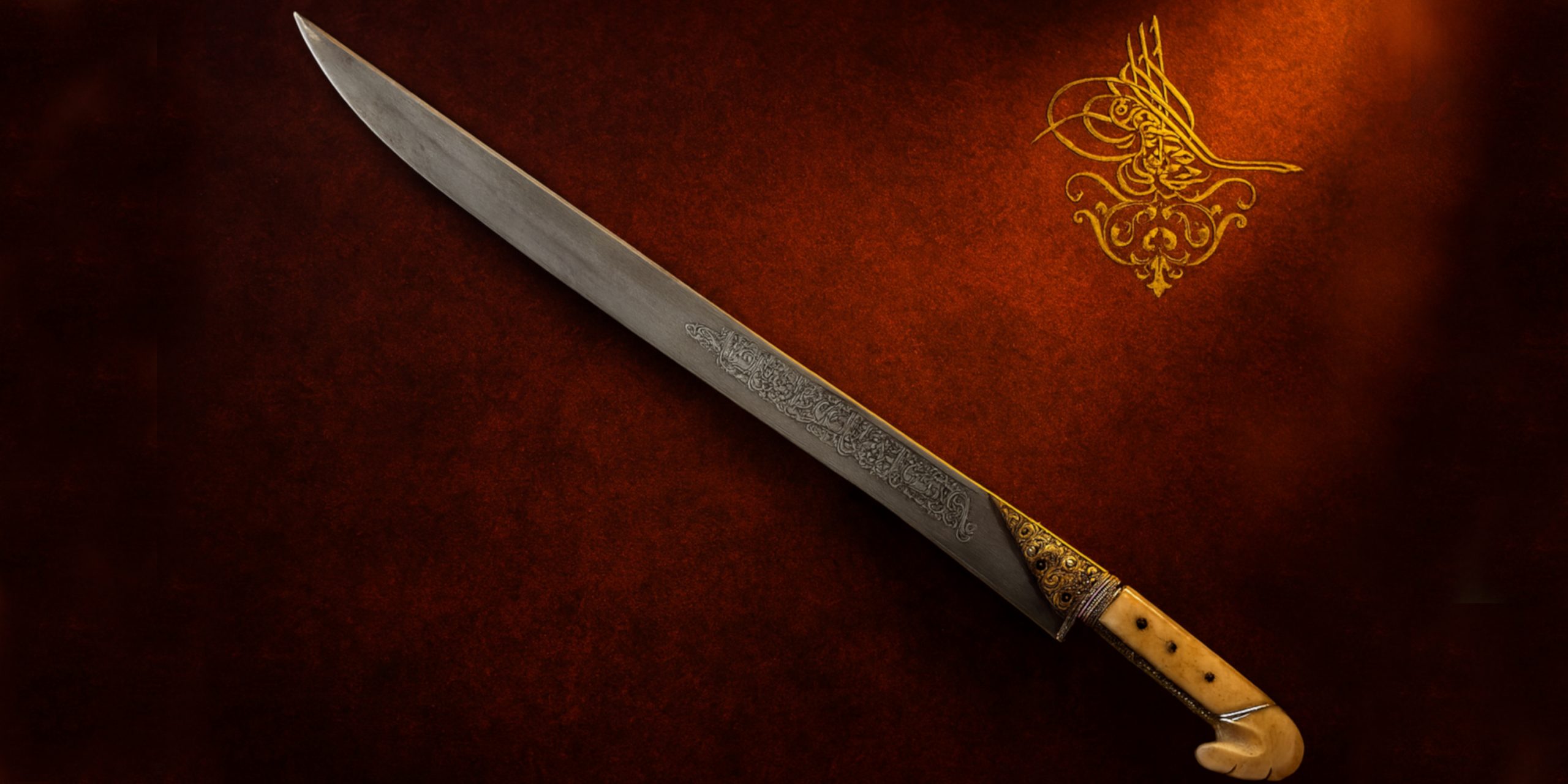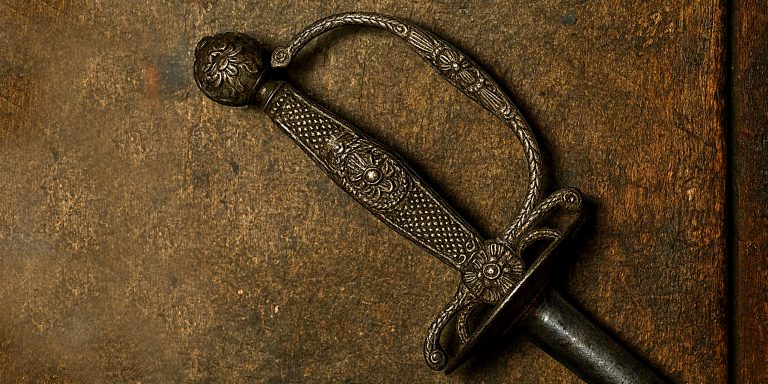
The yatagan was a short sabre widely used in Ottoman-controlled territories between the 16th and 19th centuries. Though it originated in western Anatolia, its form was quickly adopted across the Balkans, including in Serbia, where it developed regional traits in craftsmanship, materials, and decoration. Serbian variants often retained the core Ottoman profile but introduced local touches, particularly in the hilt and ornamentation.
Specifications
| Feature | General Ottoman Yatagan | Serbian/Balkan Variation |
|---|---|---|
| Overall Length | Around 75 cm | Similar (60–80 cm) |
| Blade | Curved, single-edged, soft back with hard edge | Often slightly broader curve; same forging principles |
| Weight | Approximately 0.85 kg | Comparable |
| Hilt | Two grip plaques (“ears”) of horn, bone, ivory or metal | Larger ears, often in bone or ivory, with Balkan patterns |
| Guard | None | Same; no crossguard |
| Decoration | Range from plain to highly decorated with gold, filigree, and script | Balkan types feature silver filigree, niello, and sometimes Orthodox motifs |
History and Evolution
The yatagan originated in the 16th century in the town of Yatağan, in modern-day Turkey. It spread rapidly through Ottoman domains, including Serbia, where local smiths produced regionally distinct versions. The yatagan became a standard sidearm for janissaries and other infantry units, prized for its effectiveness in close quarters.
In Serbian lands, yatagans gained ceremonial and symbolic value, especially during the decline of Ottoman authority in the Balkans. While early examples were mostly martial tools, by the 18th and 19th centuries, many were made as status symbols, richly decorated and intended for display rather than use.
Advantages and Disadvantages
Advantages
- Ideal for slashing due to forward-curved blade
- Lightweight and easy to carry
- Durable, with a hard edge and flexible spine
- Often elaborately crafted, serving both as weapons and cultural artefacts
Disadvantages
- Lack of hand guard offers minimal hand protection
- Curved design makes it less effective for thrusting
- Ornamental examples often too delicate for combat
- Limited reach compared to longer sabres or swords
Comparison with Similar Weapons
- Kilij: Longer, heavier, and used by cavalry. The kilij had a crossguard and was better suited for mounted combat.
- Shamshir: Persian sabre with a deeper curve and narrower blade, often used by nobility.
- European Sabres: Featured guards and were designed for both slashing and thrusting. Unlike the yatagan, they were often used in formal military settings.
- Yatagan Bayonets: Inspired by the blade shape but adapted as socket or knife bayonets in 19th-century European rifles. These lack the refined construction of original yatagans.
Legacy
The yatagan in Serbia and other Balkan regions, symbolised resistance, identity, and heritage. Many surviving examples are held in museums, particularly those tied to national uprisings and the decline of Ottoman rule.
Its distinct profile, curved blade, eared hilt, and often elaborate decoration, makes it instantly recognisable. It remains an object of fascination for historians, collectors, and swordsmiths alike.
Where to See
- Belgrade Military Museum: Holds several Balkan yatagans, including Serbian examples with local decorative styles.
- Topkapı Palace Armoury (Istanbul): Houses early imperial yatagans, useful for comparison with Balkan forms.
- Regional Museums across the Balkans: Smaller collections often include locally made yatagans, particularly from the 18th and 19th centuries.
- European and North American collections: Major institutions occasionally exhibit yatagans, especially in Islamic or Balkan arms displays.
Collectors’ Guide and Auction Prices
- Serbian yatagans with plain fittings and wear can range from £150 to £400.
- Mid-19th-century examples with partial silver fittings or inscriptions can reach £600 to £1,200.
- High-end specimens with full silver mounts, niello decoration, or dated inscriptions have sold for £2,000 to £4,000.
- Condition, provenance, and craftsmanship significantly affect value.
- Unsigned pieces or those with mismatched scabbards fetch far less.
- Yatagans with Orthodox Christian motifs or links to Balkan nationalist movements tend to attract higher interest.



